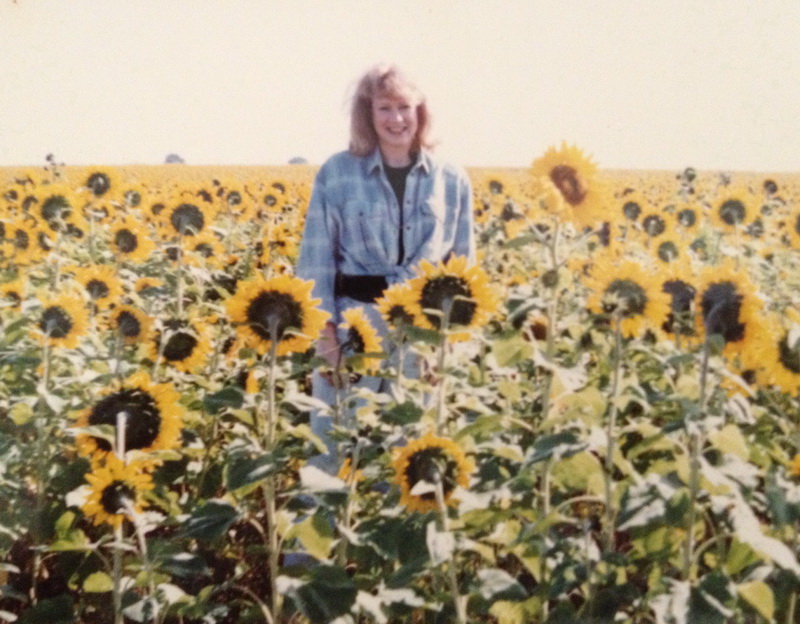Researching ‘Camille Dupré’
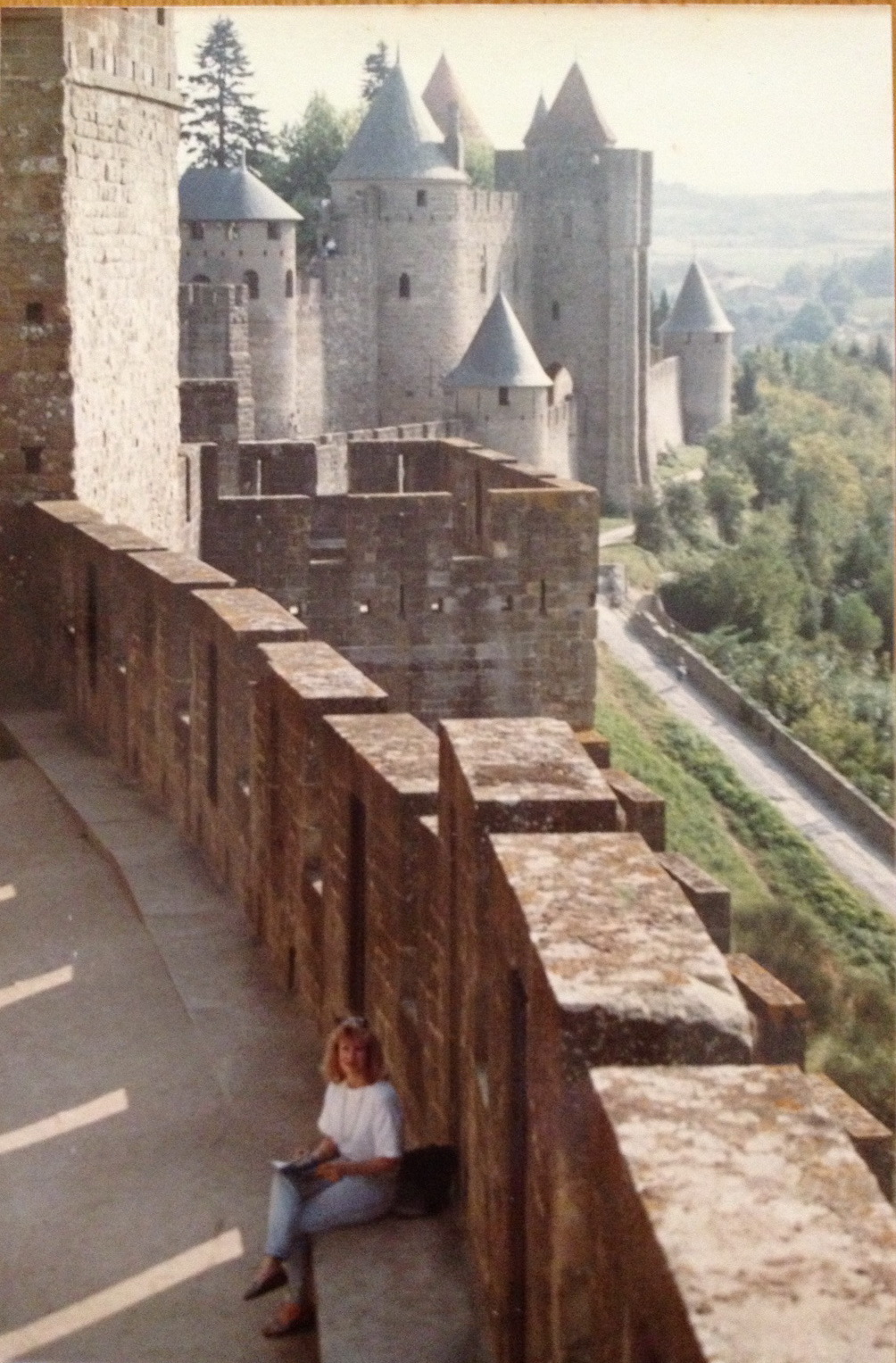
Author at Carcassonne, 1992
Writing historical fiction can be a balancing act between creating an interesting story and indulging the writer’s fascination with the facts they’ve discovered during their research. An author can easily overload a book with chunks of historical detail that are likely to slow the pace of the story and bore the reader. In literary jargon, this is called ‘information dumping’.
I remember sending the draft of my first historical novel to an assessor for an appraisal. When the manuscript came back in the post, whole sections had been crossed out with a highlighting pen. Yes, you guessed it – those sections contained unnecessary historical material which was disrupting the flow of the narrative. To this day, that particular book remains in the proverbial bottom drawer, but I did learn an important lesson.
Ever since then, I've tried to picture the historical framework of the book as the infrastructure of a house. Like the wiring and plumbing, the historical component needs to be in the background quietly doing its job, but we don’t need to see the wires and pipes.
In a field of sunflowers, Languedoc 1992
If you’ve read the ‘Author’s Note’ at the end of ‘Camille Dupré’, you’ll know I started this project a very long time ago and it has been informed by my background in French and German language and history, as well as my travels in Europe.
I’ve always loved southern France, especially the area around Montpellier, and it seemed the obvious place to set the story. I have to confess I didn’t do a lot of geographical research because I was already familiar with the location. In fact, I had walked almost every street in the city centre, getting lost on occasion in the labyrinth of mediaeval alleyways at its heart but eventually finding my way out, often emerging into the vast, sunlit square known as the Place de la Comédie.
Montpellier is an ancient city with wide Paris-style boulevards and narrow laneways. That makes it particularly intriguing. It’s also home to one of the oldest and most respected universities in the world, whose courses have attracted international students for hundreds of years. All those elements were perfect for the storyline I had in mind.
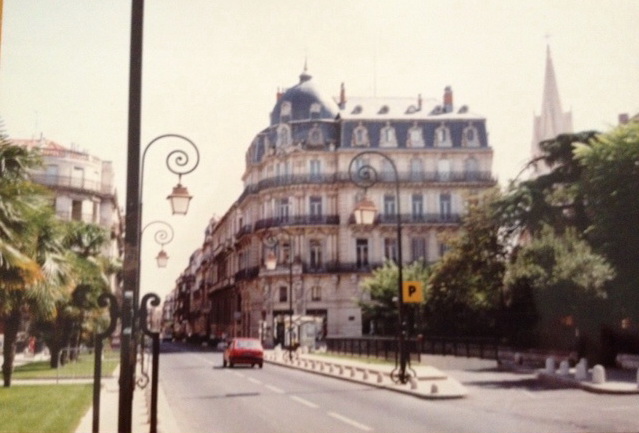
Rue Foch, Montpellier - echoes of Paris
(Photo: D.O'Brien)
I was fortunate to find a map of Montpellier circa 1945 (below), which became my guide as I worked on the story. You can see the Place de la Comédie towards the righthand bottom corner. The Hôtel de Ville (town hall) precinct where I located the lending library is almost at the centre just south of the Cathedral de St Pierre. The Jardin des Plantes is in the top left corner.
The Prison is situated north of the Arc de Triomphe (map reference 8X) next to the Palais de Justice. At the centre of the western edge of the map is the magnificent Promenade du Peyrou and the Château d'Eau.
On the Rue Foch, just opposite the Préfecture is the Place des Martyrs de la Résistance, created after the Liberation of France to memorialise those who died resisting the Nazi regime in the Montpellier area (map reference 8Y). This square is now considered the centre of the city.
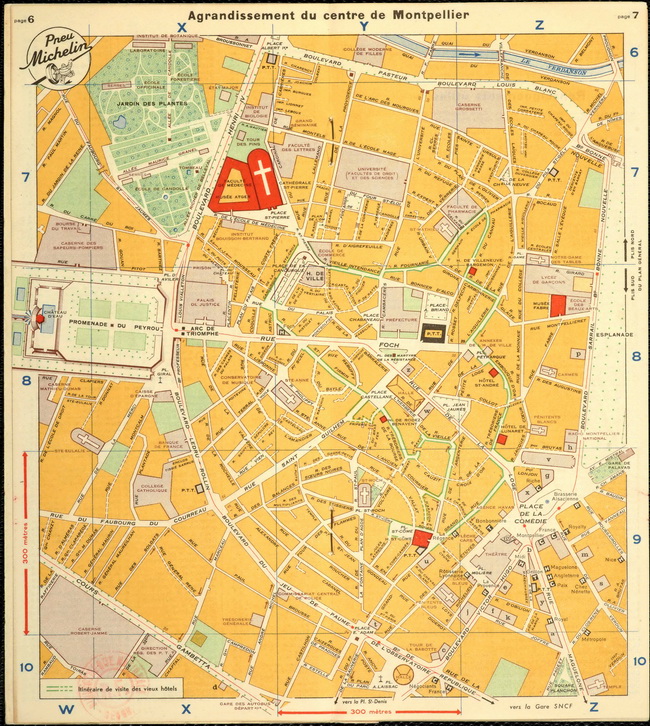
Michelin Map of Montpellier circa 1945.
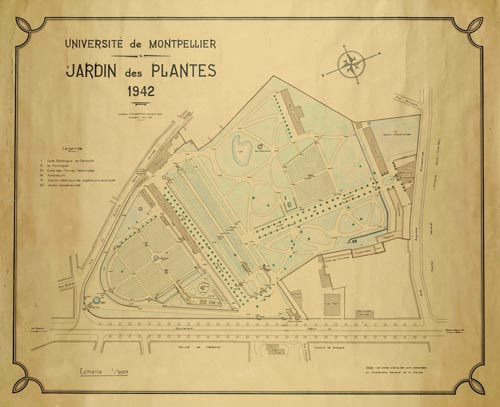
Jardin des Plantes (Botanic Gardens), Montpellier, 1942.
The Sunken Garden is in the centre overlooked by the artificial 'mountain'.
Not far from the city itself there are picturesque vineyards and olive groves, which provided the perfect place for Camille to live. (After all, the literal meaning of her name is 'Camille of the Fields'.) I had to paint a picture of life at the Domaine St-Jean-de-la-Rivière without going into too much technical detail about winemaking. Old black and white photos from 1930s' France, depicting rustic scenes such as a horse pulling a harrow or grape pickers filling wicker 'comportes', inspired the passages where the family are tending the vines and harvesting the grapes.
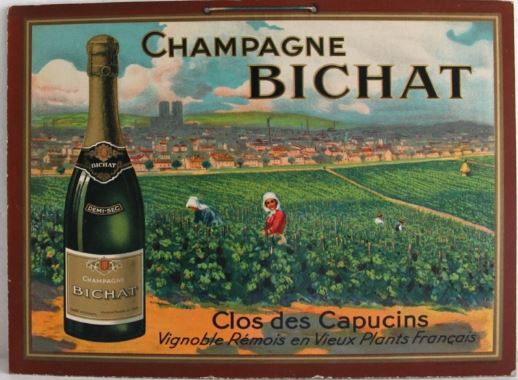
Vintage poster for Bichat Champagne.
This is mentioned in Chapter 34.
As an artist who writes (or vice versa), I’ve always been inspired by all things visual. When researching a particular era, I seek out the realia and ephemera of everyday life – objects, posters, signs, advertisements, maps, photos, clothing catalogues, recipes and, of course, newspapers. Thanks to the internet, we're able to view many of these items online.
Newspapers from the early 1930s were particularly important in informing the scenes where Camille's father shares a bottle of Merlot with Kurt and they discuss the news of the day at a time when political unrest and economic instability are increasing at a frightening pace and the spectre of Hitler's growing power is already casting a shadow over Europe.
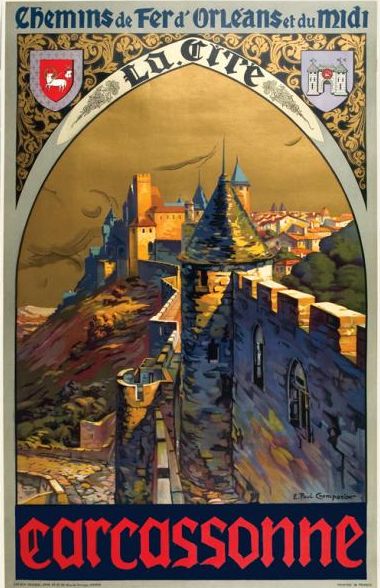
Classic railway poster designed by E. Paul Champseix in 1925.
This is the poster that Kurt sees on the train to Montpellier
and which inspires the day trip to Carcassonne at the end of summer in 1931.
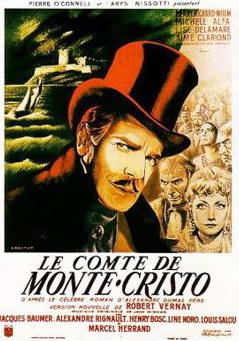
Film poster: 'Le Comte de Monte Christo'.
Camille and Kurt go to see this film at the Gaumont cinema in Montpellier
in June, 1943, just after its release.
The 1943 French production was made under Nazi supervision
but still managed to convey a message about overcoming tyranny.
I’m a movie buff, which means films seem to play a big part in my stories. Initially, I didn’t know much about French cinema in the 1930s and early ’40s, but I soon found myself watching a variety of old French films on YouTube. Not only do films with contemporary themes capture the spirit of the period, they also give you a feel for how people dressed and spoke, the vehicles they drove, the houses they lived in.
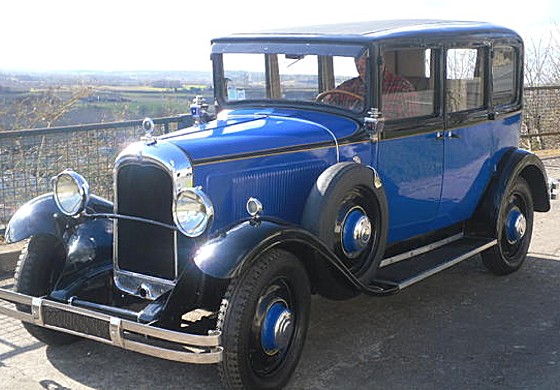
Citroen AC4 Berline 1927.
This is the car (but in black) that Kurt hires for the day trip to Carcassonne.
You will find details of my other reference materials in the Author’s Note at the end of the novel.
Finally, I must offer a disclaimer. Even though I like the factual details and timelines to be correct, I don’t purport to be a purist. Sometimes there has to be a compromise for the sake of the story. After all, this is an imaginary tale in an historical setting, not a work of historical non-fiction.
You can download the free e-novel here.
Deborah O’Brien
15 May, 2020

